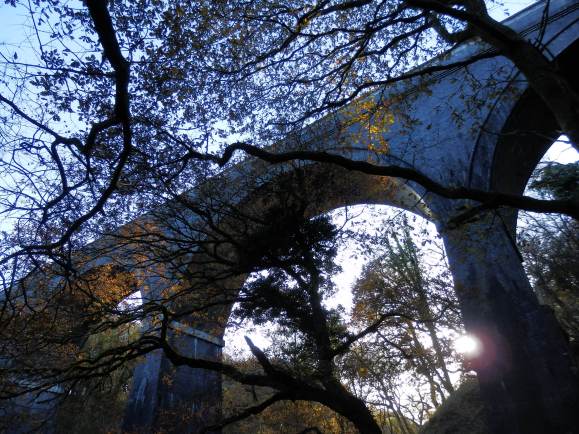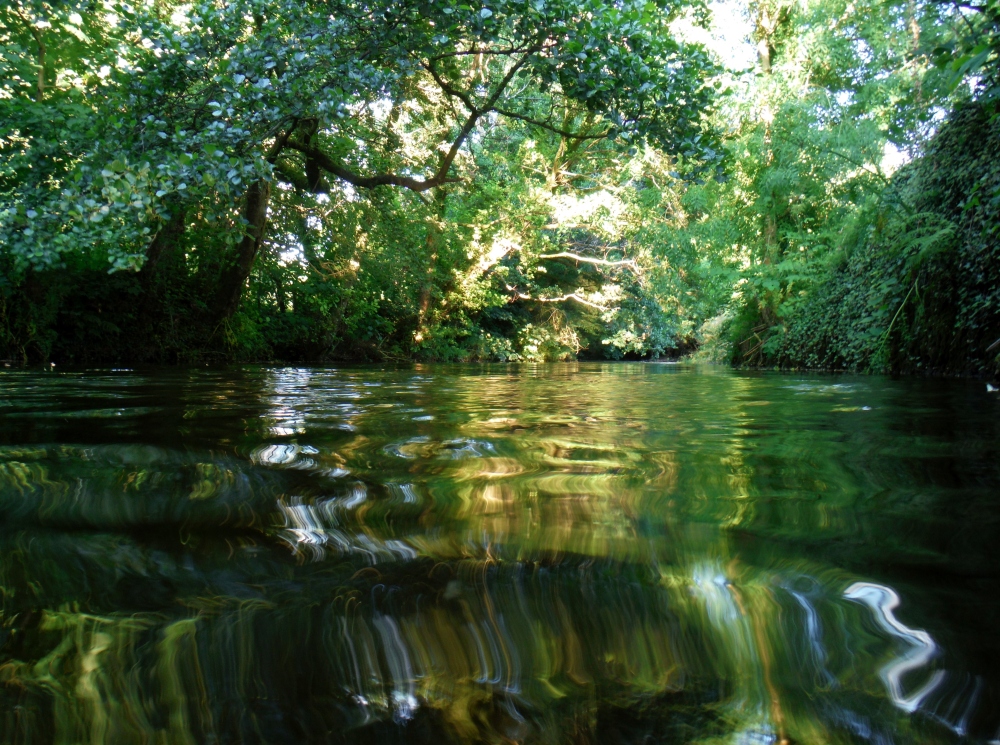Magpie
August 2nd 2014
Dartmoor is littered with honeypots.
Places people go on hot Sunday afternoons to escape the pressure cooker of the city.
In my mind’s eye, honeypots drip the 1950s – all braces and rolled up trousers, white ankles paddling whilst a kettle whistles on the primus. Lazy deckchair days behind the Daily Mirror.
A packet of Woodbines.
Which is why I tend to avoid them – particularly those close at hand.
One such honeypot is but a short stroll from my cottage, through woods that are steeped with the scent of bluebells in May, when the forest floor is painted in the same colours as the sky.

And that honeypot is known locally as ‘Magpie’ …

Named after the inn that once gave riverside rest to travellers on the turnpike linking the channel coast with prosperous Tavistock; Magpie has been a popular bathing place for generations.
For here flows the Walkham, the only river to run its entire course on Dartmoor. This main tributary of the Tavy arises high on the northern moor; draining from sodden peat into a bleak and featureless landscape at Walkham Head. It then gathers pace and pours through heathland, then pasture, before reaching Magpie. Here it begins cutting a winding path through tree-lined gorges en route to its union with the Tavy at Double Waters.
The Walkham Valley is peppered with isolated mine workings, their remnants choked by roots and crowned with moss like some forgotten jungle temple.

The grassy hummocks of Magpie itself conceal the corpse of Wheal Franco, a copper mine which produced 10,000 tons of valuable ore between 1826 and 1862.
Here the river is spanned by Bedford Bridge, built in 1822 and carrying the road between Yelverton and Tavistock.

The water is deep enough to swim beneath its arch, but to be honest, this place had never really appealed. Somehow the thought of swimming so close to the modern world always left me colder than the river in February.
But a good friend had recounted happy family memories of this place, so I had filed it away as a ‘possible’ – but no more than that…
Which is why I was a little surprised to find myself heading for Magpie one sultry, sticky evening in high summer.

I followed the disused railway through the woods, along a track that now bears daytrippers on bicycles rather than in carriages, then headed down beneath the viaduct, past yarrow and wild thyme. Moments later I was walking out onto the heavily grazed and much trampled grassland that abuts the Walkham. Here chamomile may still be found. Once commonplace, but now exotic in Britain, its aroma has long scented herbal infusions and the finest lawns.
It was getting late and a rising wisp of blue smoke between distant trees was the only sign that I was not entirely alone.
Sliding into the cool water, I was surprised that it was deeper than it looked – for refraction had overcome reason and I had long forgotten my first year physics.

The vista before me was also far from expected. The slate and granite arch of the bridge framed a perfect picture – a study in emerald. Beneath my feet, long fronds of weed streamed across the sandy river bed; green fingers pointing me downstream.
Ignoring their direction, I headed up and under the masonry, where stalactites dripped from the overhang. Here the heat of the day, efficiently absorbed by the black tar above, emanated back from the stones in a hazy shimmer.
Swimming on and into the shallows where acrobat shadows danced across the water, I lay on my back and floated beneath boughs of willow, oak and hazel. Past alder, the only British deciduous tree to bear cones, and by banks of wild chervil whose frothy white flowers deserve the title Queen Anne’s Lace more than their more common name – Cow Parsley. To me these are the quintessential hallmark of summer – luxuriant, abundant but short-lived.

Back under the bridge, face down and floating to where Marley Bone was patiently waiting, I smiled as I thought of the traffic passing overhead and the shock that my cheeky grin would give to anyone who happened to glance down from the Number 83 bus!

Beyond lay an artificial pool, created by damming the course of the river – a temporary arrangement of rocks that would never survive the first surge of Autumn. I drifted softly up to the barricade with eyes barely proud of the mirrored surface.
Here a dipper perched, attending to its evening ablutions in the sinking light. This is very much a local bird, characterised by it’s shocking white breast, low flight and bobbing tail. But it is not this twitch of feathers that gives the dipper its name – rather it is the unusual habit of walking into and under the water in search of insect larvae.

Above – and also hunting insects – a bat looped in dizzying dives around my dripping head as I clambered out of the river and into the still warm night air.
Retracing the path home, I passed a young couple with a six-pack of lager and a disposable barbecue.
The night-shift had arrived….
Great description Tony! A walk from there, down the river, is one of my favourites. Makes me quite homesick reading your words.
LikeLiked by 1 person
Lovely descriptions Tony. I too swam here early last summer, and was surprised by two kingfishers.
LikeLiked by 1 person